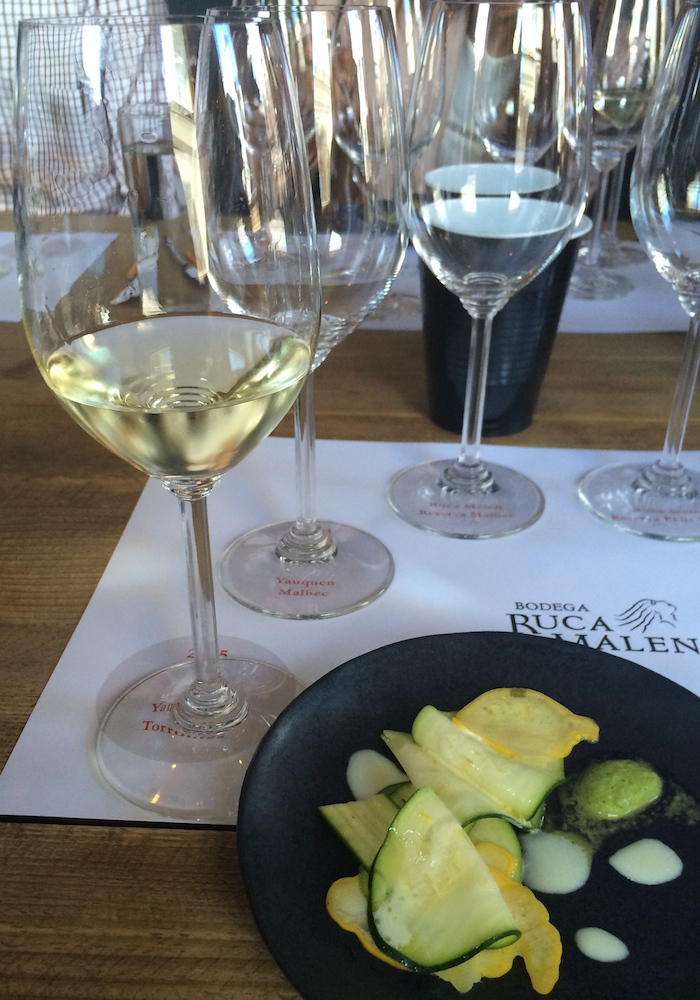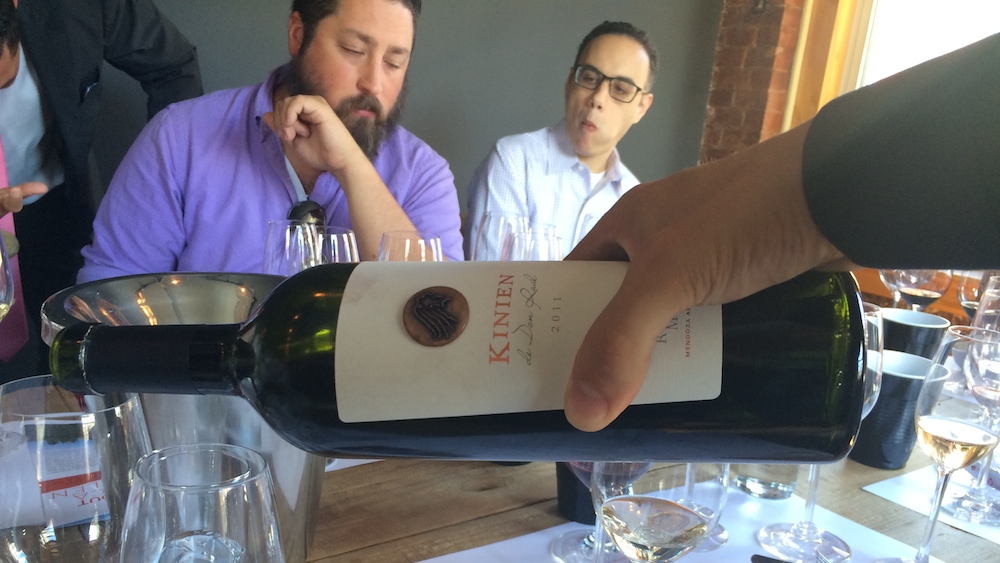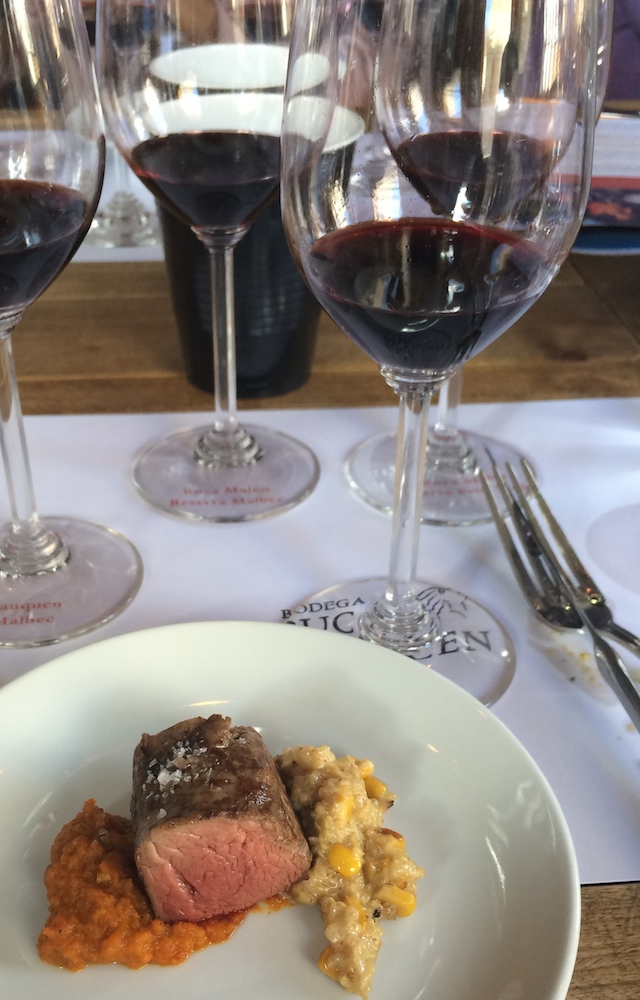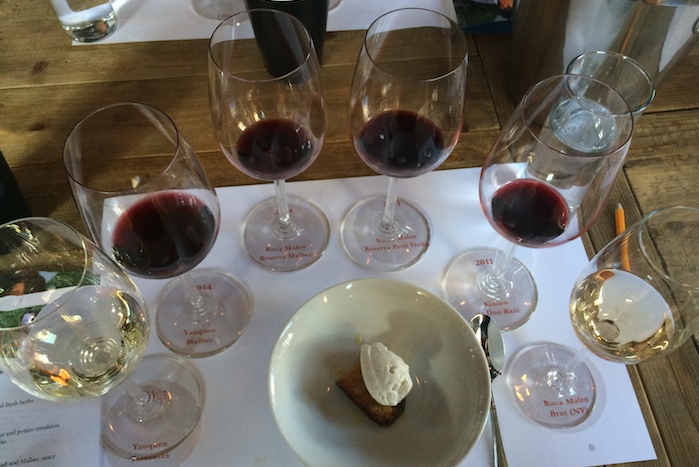Argentina’s wine industry, suffice to say, is no longer a sleeping giant. Poised for global breakout at the dawn of the 21st century, the country has since delivered on that promise.
Argentina finished fifth in 2013-14 U.S. wine imports, according to the 2015 Beverage Information Group Wine Handbook. It was only 3,000 gallons behind France. (Italy retained top position, while Australia and Chile finished second and third, respectively.) Americans now know that Argentina means quality. Especially when it comes as Malbec, which has emerged in recent time as the prominent varietal in the heart of the Argentinian wine industry, the Mendoza Province.
And in this northwestern region — which accounts for two-thirds of Argentinian wine production — you’ll find Bodega Ruca Malen. The winery owns 52 acres of estate vines, at an altitude of 3,280 feet, about 13 miles south of the provincial capital city of Mendoza. Ruca Malen was founded in 1998, and produces makes an array of wines made with “food-friendly” in mind.
Fitting, then, that the winery invited alcohol-industry professionals (myself included) to a wine pairing this week at NYC’s The Kitchen Table. Argentinian chef Lucas Bustos, known for his wine pairings, prepared six dishes served alongside six wines presented by Ruca Malen winemaker Pablo Cuneo.

Poured first was the Yauquen Torrontés 2015 (SRP: $12.99 per 750-ml. bottle). This white was fresh and quite crisp, with a pronounced “Mendoza-style” minerality, as Cuneo pointed out. The citrus notes and white floral flavors paired well with Bustos’ seasonal squash marinated in lemon, chilis and fresh herbs.
Next was the Yarquen Malbec 2014 ($12.99). Ruca Malen’s entry-level Malbec, this classic Mendoza wine was creamy with a light spice upon the finish. Red floral aromas were followed by flavors of ripe cherry and other red fruits. But it was not overpoweringly red — or pushing towards black-fruit flavors — which made the wine a natural match for Bustos’ carob dough stuffed with Malbec-braised rabbit, with a nut and potato emulsion.
Third was the Ruca Malen Reserva Malbec 2014 ($18.99). My personal favorite of the day, this bottle featured greater concentration of Malbec flavors than the previous, with a fleshy texture and soft tannins. And the pairing was perfect: cured and olive oiled-marinated Angus beef, with bean salad and Malbec sauce. The marinating made for a sweet meat that matched the medium body and subtle complexities of this wine.
Ruca Malen Reserva Petit Verdot 2013 ($18.99) had vanilla aromas, a buttery body, red-fruit flavors, and a dry finish with light spice. The wine also sported the tannins, acidity, and complexity to hold up against Bustos’ Curanto-style braised osso bucco with roasted vegetables.
Looking for something to age? The Kinien de Don Raúl 2011 ($75) was a big, bold red blend so concentrated with flavors of black fruit, caramel sweetness, and baking spices that there is likely no limit on its cellaring time. 10 years? 25? 50? Infinity? Yet for such power, this blend does not attack you with tannins. The power rested solely in the complex, layered flavors.


Ruca Malen makes this blend with the best barrel selections from the best vintages, Cuneo says. It’s 64% Malbec, 15% Petit Verdot, 11% Carbernet Sauvignon and 10% Syrah.
And it was a bit much poured alongside the simpler flavors of the grilled filet mignon with smoked carrot puree, quinoa and sweet corn. Bustos sought common ground between simplicity and complexity — and the food was quite good — but the wine was just too powerful, causing discord between drink and dish. Either of the Malbecs would have been the better choice.
Last was the Ruca Malen Brut Sparkling Wine NV ($27.99). This aggressively bright bubbly is 75% Pinot Noir and 25% Chardonnay. Aging 18 months in contact with the lees led to creaminess and complexity, in addition to the yeast character and toasted notes. The latter flavor, plus the bright acidity, went well with the ice-cream chill of the dulce de leche cake (pictured atop), though again the wine here was perhaps a bit stronger than the dish.
Which speaks more to the willingness to experiment of Bustos than any fault of the wines. Ruca Malen is upfront in its press materials about focusing on “food-friendly,” and the tasting was a testament to the pairing possibilities produced by this Argentinian winery.
Kyle Swartz is associate editor of Beverage Dynamics magazine. Contact him at kswartz@epgmediallc.com




